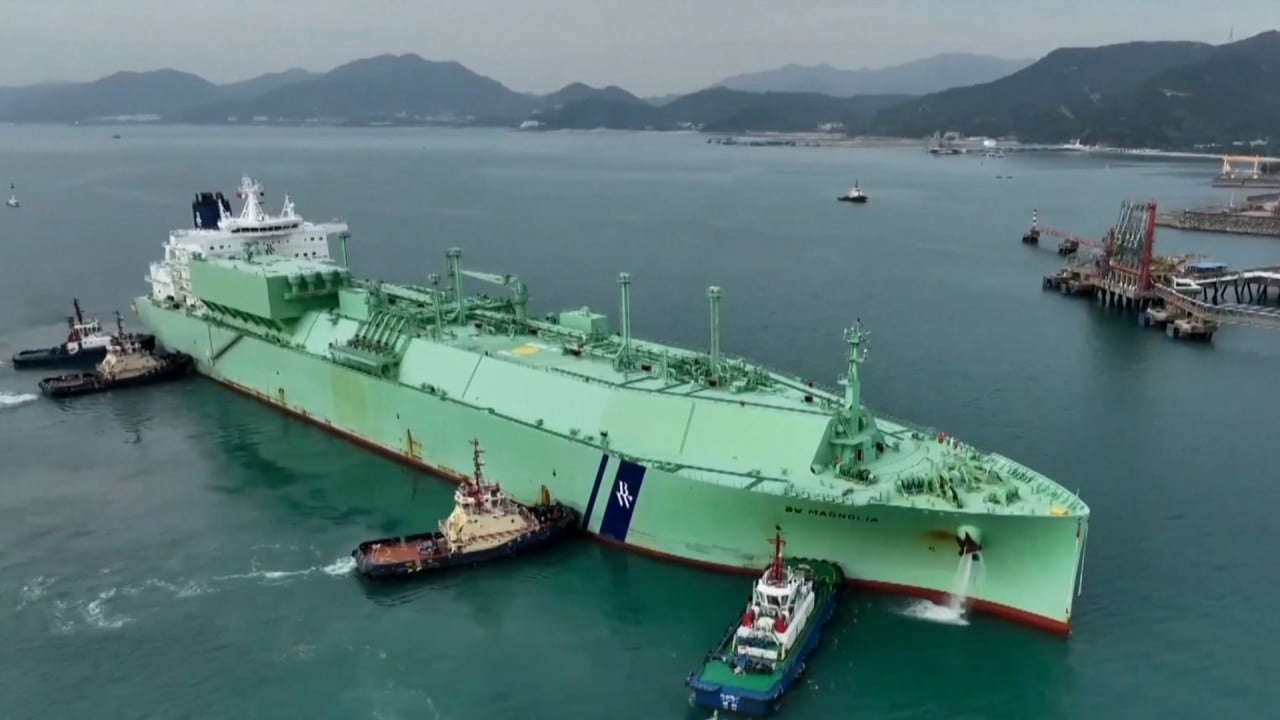
01:13
Chinese mainland begins supplying Hong Kong with carbon-neutral liquefied natural gas

With much fanfare, HK Electric has announced plans for a 150 megawatt offshore wind farm southwest of Lamma Island that it hopes will start operating in 2027. This comes after CLP Power revealed plans for a roughly 250MW offshore wind farm in Hong Kong’s southeastern waters off Clear Water Bay.
One could be forgiven for thinking that Hong Kong, responding to the energy supply crisis concentrated in the European Union following Russia’s invasion of Ukraine, is joining others across the world in an urgent push to reduce reliance on fossil fuels, both to improve energy security and to get serious about reducing carbon dioxide emissions in the fight against global warming.
I wish this were true. In reality, Hong Kong is an embarrassing laggard in the development of renewable energy in general, and wind power in particular. I’m not going to bother to try to compare it with countries such as Norway, Brazil or Canada, which by last year relied on renewable energy to satisfy 99.5 per cent, 79 per cent and 69 per cent of their electricity needs respectively as of 2021, according to Our World in Data.
Put on one side too the achievements of Germany (41 per cent) and the United Kingdom (40 per cent). Compared with China (28 per cent as of 2020), the United States (21 per cent), Taiwan (7 per cent) or even Singapore (2.13 per cent), Hong Kong’s progress is nothing short of pathetic – a negligible 0.03 per cent as of 2020
In its Electrical and Mechanical Services Department data, our government says our energy mix relies on natural gas for 48 per cent, coal for 24 per cent, and “nuclear energy and renewable energy” for 28 per cent. But given that around 27 per cent is attributable to nuclear energy brought in from Daya Bay, renewable energy’s share is extremely small.
Hong Kong’s embarrassing tardiness has little to do with climatic or technical obstacles. Studies going back to 1997 make it clear that Hong Kong has plenty of wind power potential.
In a June 2017 review, Baptist University’s Dr Kevin Ho quoted a 2000 study which said it was technically feasible to build 7,688 offshore wind turbines in Hong Kong waters, producing 25,000 gigawatt hours of power a year, and meeting 57 per cent of local energy demand. A widely referenced 2019 paper by a team from the North China Electric Power University and Hong Kong Polytechnic University put Hong Kong’s wind power potential at 14,449 GWh, which would still meet more than 32 per cent of local power needs.
Many would quite reasonably argue that such large numbers are extravagantly unrealistic, would involve stringing long lines of wind turbines along Hong Kong’s panoramic mountain ridge lines and damaging large areas of marine habitat. Until recently when the cost of wind power has fallen below the cost of coal- or gas-powered electricity, such wind power development would also have required large government subsidies.
Even so, the colossal gap between our ideal-world potential and our risible progress, suggests a shameful neglect of the imperative to reduce CO2 emissions.
I am reminded of a persistent characteristic of our Hong Kong administration over the past two decades: procrastination. Whether it is on urgently needed housing, bolstering of primary healthcare infrastructure or development of renewable energy, our experience is of inconclusive consultation after chronic dithering.
Back in 2006, CLP provided the government with a blueprint for a wind farm off Clear Water Bay. A detailed environmental impact assessment tackled the practical obstacles and challenges. Now this same blueprint seems to have been dusted down as part of CLP’s Climate Vision 2050. If Chief Executive-elect John Lee Ka-chiu’s “result-oriented” governance means cutting through this chronic procrastination, then perhaps CLP’s wind farm will at last be built. This breakthrough alone would make Lee welcome.
The wind power plans of both HK Electric and CLP will help, no matter how overdue. But they amount to toe-in-the-water gestures of little material consequence. The CLP wind farm could provide about 250MW – just over 3 per cent of its current local installed power generation capacity of 7,583MW, while HK Electric’s 150MW farm would account for about 4 per cent of its 3,637MW capacity.
It is perhaps unfair to say these are token gestures, but when set against the global climate change crisis, and what others are doing, in particular in China and the EU, it is hard to believe that our government – or our electricity providers – are doing all they should.
Hong Kong’s Climate Action Plan 2050, promises HK$240 billion (US$30.5 billion) to fund the fight against climate change, at least some of which may be invested in support and subsidies to encourage wind power and other forms of renewable energy. The government’s aim is to see renewables account for 7.5-10 per cent of power generation by 2035, and 15 per cent by 2050. But no road map is yet clear.
There might also be merit in joining forces with energy providers across the Greater Bay Area – not just because of the economies of scale that might arise, but because officials in Beijing seem to have a much keener strategic focus on renewable energy development. According to the International Energy Agency, China alone has in recent years accounted for 46 per cent of worldwide renewable power capacity additions – about 140GW a year since 2019.
If that is what Lee means when he talks about “result-oriented” government, then I am all for it.
David Dodwell researches and writes about global, regional and Hong Kong challenges from a Hong Kong point of view